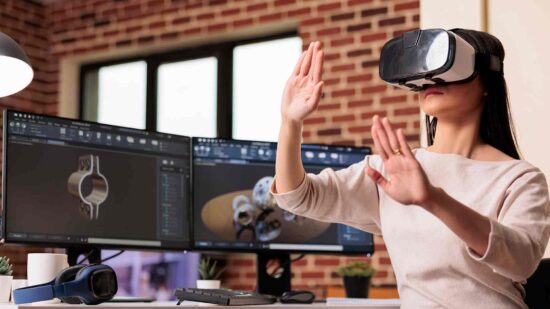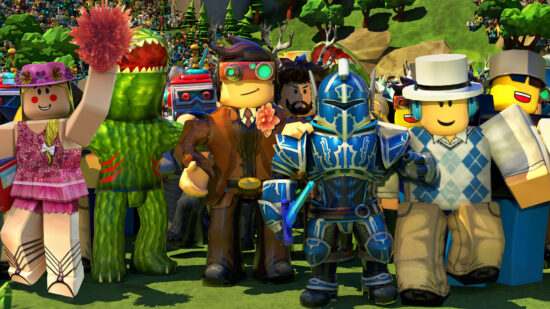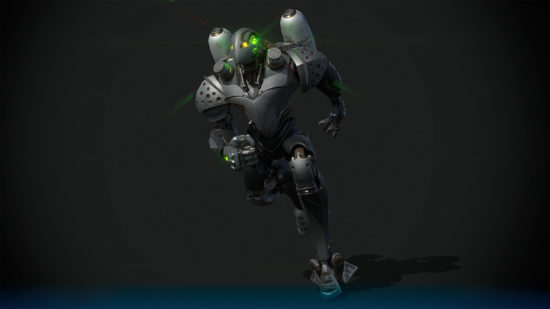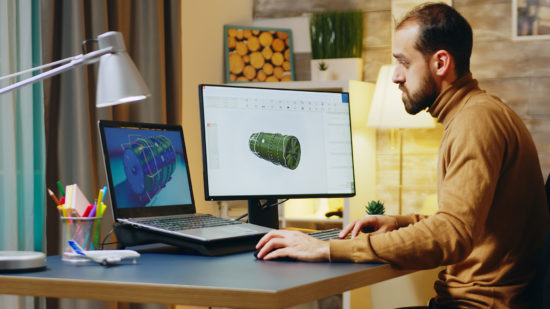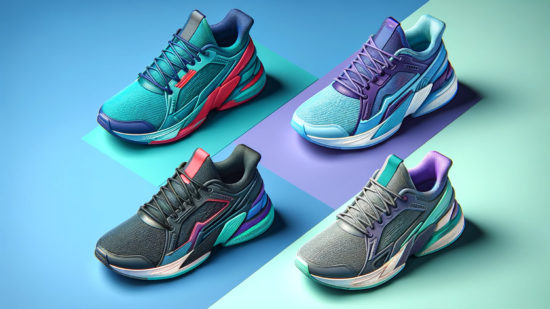3D visualization stands as a pivotal technique in digital design, encapsulating the art of transforming ideas or yet-to-be-realized concepts into volumetric digital models that mirror real-life objects or envision those not yet produced. This definition, while accurate, only scratches the surface of the multifaceted nature of 3D visualization. It encompasses a broad spectrum of applications, innovative techniques, and tangible benefits, all worthy of exploration and understanding.
Central to the process of modeling for visualization is its unparalleled capacity to elevate the engagement of a specific audience. Mastering the nuances and best practices of this field is not merely an exercise in technical proficiency; it represents a strategic investment in the future trajectory of a business. The potency of 3D visualization lies in its ability to vividly bring ideas to life, making them more relatable and understandable to the viewer.
As an established 3D modeling company, we are proud to present a comprehensive guide crafted to highlight the most effective 3D visualization techniques and their practical applications. This guide is more than just an informational resource; it is a roadmap for businesses eager to harness the transformative power of 3D visualization. In this guide, you will find a detailed tour through various 3D visualization technologies and visualization techniques, offering insights into their relevance and utility in different business contexts.
Our guide is designed to serve as your compass, pointing you toward the most impactful 3D visualization technologies and techniques. It’s an exploration not just of the ‘how’ but the ‘why’ behind each technique, providing a deeper understanding of their practical benefits in a business setting. Let’s begin to unlock new dimensions of business innovation through the power of visualization.
What Is 3D Visualization?
3D visualization is an advanced process involving lifelike, three-dimensional digital models. These models can represent existing objects or concepts yet to be brought into physical reality. At its core, 3D visualization serves as a bridge between creative ideas and their tangible representations, leveraging state-of-the-art visualization technologies to render objects with stunning realism.
The power of 3D visualization lies in its diversity of applications, enabled by a variety of sophisticated 3D visualization techniques. These techniques range from simple wireframe constructions to complex photorealistic renderings, each chosen based on the specific requirements of a project. With advancements in 3D visualization technologies, these techniques have evolved, allowing for more intricate and detailed representations than ever before.
Moreover, 3D visualization is not limited to static images. Modern visualization technologies enable the creation of interactive models that can be explored and manipulated in real time, providing an immersive experience. This interactive aspect of 3D visualization is precious in industries such as architecture, product design, and healthcare, where a detailed understanding of spatial relationships and aesthetics is crucial.
In summary, 3D visualization is a dynamic and versatile field, constantly progressing with new visualization techniques and technologies. Its ability to transform abstract concepts into vivid, three-dimensional visuals makes it an indispensable tool in various sectors, offering enhanced clarity, engagement, and insight.
Why 3D Visualization Matters
Because 3D visualization can turn abstract concepts into tangible, interactive models, it has become an indispensable tool in many different sectors. The importance of 3D visualization lies in its ability to produce precise, in-depth depictions of items or ideas that are frequently unfeasible to communicate using conventional two-dimensional graphics.
Several visualization techniques enable the application of various 3D visualization, which is one of its key characteristics. These methods allow experts to produce detailed models that fully comprehend the issue, from complex product designs to architectural plans. This understanding is further enhanced by the application of cutting-edge 3D visualization technologies, which make it possible to create aesthetically pleasing and incredibly functional models.
3D visualization has the invaluable capacity to improve communication and decision-making. Before any real work starts, stakeholders can use immersive visualization to investigate various project aspects, spot possible problems, and come to well-informed conclusions. With the use of 3D visualization techniques and methods, this proactive problem-solving skill saves money and effort by lowering the possibility of costly mistakes.
As a result, it is impossible to overestimate the significance of 3D visualization in the visually-driven, fast-paced world of today. It is a cornerstone in sectors that demand accuracy, clarity, and innovation because of its integration of cutting-edge visualization technologies and methodologies, which have altered how we conceptualize, present, and interact with 3D models.
What Are the Different 3D Visualization Techniques Used for?
Choosing the proper technique is important indeed. However, it’s better to define how to apply 3D visualization in your business first. That’s why we’ll start with 3D visualization examples describing how different industries can get the most out of this solution.
Architecture & Interior 3D Visualization
Achieving a meticulously crafted and successful architectural project hinges significantly on the quality of its initial design. It’s essential to present a vision that aligns with the client’s expectations and vividly portrays the potential of the future building. While traditional methods like schemes and 2D sketches have been staples in design, they often need to be revised to convey an architectural concept’s full depth and nuance. Obviously, this is where the power of true-to-life 3D visualization becomes evident.
Take, for instance, the real-time interior visualization techniques created using advanced platforms like Unreal Engine 4. These methods enable the depiction of an apartment’s design in such a vivid and immersive manner that it allows individuals to envision themselves within the space. Clients are provided with a virtual tour, where they can navigate through each room, scrutinizing every aspect of the interior with remarkable clarity.
The most striking advantage of 3D visualization in architectural design lies in its flexibility and interactivity. It affords clients the luxury of making real-time edits, exploring various project variants, and comparing different design options seamlessly. Such an interactive tour through the proposed space enhances the client’s understanding and satisfaction and streamlines the decision-making process.
Furthermore, those interested in mastering how to create a 3D interior design will find that integrating 3D visualization techniques and technologies is invaluable. These tools and methods are at the forefront of modern architectural design, offering a dynamic and detailed approach to visualizing spaces before they are physically realized. By employing these visualization techniques and technologies, architects and designers can produce more accurate, engaging, and adaptable designs, ensuring both the project’s success and the client’s delight.
Visualization for eCommerce
3D product visualization significantly enhances the online shopping experience, offering consumers a vivid and interactive way to engage with products. Its application in eCommerce is diverse and impactful, extending beyond traditional display methods. For instance, it can be a photorealistic render, providing a lifelike representation of a product, or it might manifest as a comprehensive 360-degree 3D view, enriching digital catalogs with a more immersive experience.
This visualization technology also paves the way for creating digital twins of products, which can be showcased in innovative platforms like metaverse marketplaces. Here, consumers can embark on a virtual tour, exploring products in a detailed and interactive environment that closely mirrors the physical world. Additionally, integrating 3D models with product configurators in eCommerce platforms empowers customers to customize and personalize goods to their preferences before making an online purchase, enhancing the overall shopping experience.
Another groundbreaking application of product visualization in eCommerce is augmented reality (AR). A prime example of this is Amazon’s recent introduction of the virtual try-on for shoes, a leader in the eCommerce sector. This AR-based solution allows Amazon’s customers to virtually try on various shoes, selecting from an array of brands and models directly from their devices. This innovative approach not only provides a more engaging shopping experience but also aims to increase customer engagement and the conversion rate significantly.
By utilizing these advanced 3D visualization techniques and technologies, eCommerce platforms can offer a more dynamic, detailed, and interactive shopping journey. This captivates customers and provides them with a more accurate representation of products, ultimately leading to more informed purchase decisions and increased satisfaction.
Marketing Visualization
3D visualization is increasingly becoming a cornerstone in the marketing strategies of various brands. Often, before potential customers land on a brand’s website, their first encounter with the brand is through its advertising efforts. In this context, using 3D visualization techniques is pivotal in gaining a competitive edge for businesses.
Marketing specialists frequently employ these techniques to animate digital twins of products, integrating them with captivating visual effects (VFX) and engaging music. Additionally, they incorporate compelling descriptions to craft commercial videos that are not just informative but visually stunning. These videos are designed to capture the attention of potential clients, drawing them into the brand’s narrative and offerings.
Moreover, 3D visualization can include more than elaborate video productions. It is also effectively utilized in creating smaller yet equally impactful animated banners for online platforms. Whether it’s a detailed video or a concise banner, both methods leverage the power of 3D visualization to enhance brand visibility and appeal.
These visualization techniques, supported by advanced 3D visualization technologies, are not just about displaying a product; they create an immersive experience. Through a virtual tour of the product’s features and benefits, these techniques enable customers to gain a deeper understanding and connection with the brand. This approach, harnessing the latest in visualization technologies, significantly contributes to a more dynamic and engaging marketing strategy, driving interest and conversion for the business.
Visualization for Entertainment Industry
3D visualization assumes its most expansive and impactful role in the entertainment industry, redefining storytelling and audience engagement. Unlike previous centuries’ more straightforward visual methods, today’s technology empowers creators to bring stories to life through the sophisticated art of filmmaking and game development. This evolution has significantly transformed how narratives are conveyed, offering viewers and players immersive experiences.
Realistic 3D models are right on the surface of this transformation. They allow us to see our cherished characters and fantastical worlds, once confined to the pages of books or script lines, leap into vivid existence on screens. Creating these models involves intricate 3D visualization techniques, which artists use to craft detailed, lifelike representations that resonate deeply with audiences.
Beyond film and gaming, 3D visualization extends its reach into mobile applications. These apps allow users to create digital pets, interact with amusing filters featuring 3D creatures, and visualize their ideas across various domains. This expansion illustrates the versatility of 3D visualization technologies, showcasing their ability to entertain and inspire creativity and innovation.
Furthermore, these applications of 3D visualization are made possible by a suite of advanced visualization techniques and technologies. The entertainment industry can offer ever more captivating and interactive visual experiences through continuous advancements in these areas. Whether through a detailed tour of a game’s universe or the interactive enjoyment of a mobile app, 3D visualization is continually reshaping how we experience and interact with digital content.
Product Design and Presentation Visualization
Gone are the days when sketching and schematic design were the sole means to conceptualize a future product. In the current era, the evolution of technology has brought forth a revolution in design methodologies. Specialists now harness professional software to craft 3D product models that closely resemble their real-life counterparts. This advancement in design techniques marks a significant leap from traditional methods, offering a more accurate and detailed representation of products.
3D visualization techniques in creating these models have become a game-changer in product design and development. Such an approach enables designers to present their creations in an outstanding format beyond mere visual representation. It allows the integration of intricate details and textures, making the model almost lifelike. Furthermore, the flexibility afforded by these 3D visualization technologies means that making edits and adjustments to the prototype is straightforward and efficient.
This high level of detail and realism in 3D visualization enhances the effectiveness of presentations to colleagues, partners, investors, or clients. Stakeholders can immerse themselves deeply in the project, experiencing the design comprehensively and tangibly. Such immersive experiences significantly increase the likelihood of project approval and support, as stakeholders can fully grasp and appreciate the envisioned product.
Therefore, adopting advanced 3D visualization techniques and technologies has become indispensable in modern product design. Not only do they streamline the design process, but they also enhance communication and understanding among all parties involved, elevating any project intention’s success rate.
Popular 3D Visualization Techniques
3D visualization, a dynamic and multifaceted field, offers a variety of formats tailored to the specific needs of different industries. For instance, one popular option is to present a product as a 2D render, essentially a photorealistic flat image derived from 3D content. This method combines the detail of 3D models with the simplicity of 2D imagery, providing a clear and compelling visual representation.
Further, creating animated 3D videos is one of the most engaging presentation methods. This practice brings products to life through motion, allowing for a more comprehensive demonstration of features and functionalities. Animation in 3D visualization adds a dynamic quality to presentations, making them more captivating and memorable.
The choice of a 3D visualization technique is crucial for achieving desired outcomes. By selecting the most appropriate approach and method, specialists can design models that are not only more relevant to the target audience but also more efficient in terms of resource utilization. Different visualization techniques offer various advantages, whether clarity, engagement, or cost-effectiveness, and choosing the right one is critical to the success of a project.
To aid in this decision-making process, we encourage thoroughly exploring the most efficient 3D visualization techniques, understanding their unique strengths, and the reasons behind choosing a particular method. This knowledge of 3D visualization technologies and techniques is invaluable, as it enables the creation of models that are not only visually impressive but also aligned with specific project goals and requirements.
3D Realistic Visualization
Utilizing 3D visualization techniques, a modeler’s primary objective is to forge a digital representation of an object that mirrors its real-world counterpart with striking accuracy. This intricate process involves meticulously replicating real-world proportions, color schemes, textures, and even the most minute details of the item. The fidelity of this representation is paramount in achieving a realistic outcome.
Adopting a realistic approach in 3D visualization is crucial, especially when dealing with products and complex projects that require a high degree of precision. Such projects demand a visual output that provides customers with a clear and accurate representation of what they can expect in the tangible world. This level of detail and realism is achieved through advanced 3D visualization technologies and techniques, which enable the creation of virtually indistinguishable models from their physical counterparts.
Furthermore, the goal of a photorealistic presentation in 3D visualization extends beyond mere accuracy. It also aims to engage new leads and deliver a satisfying customer experience. By presenting a lifelike and detailed visualization of a product or project, potential customers can gain a comprehensive understanding and feel more connected to the proposed outcome. This method, leveraging the latest visualization technologies, enhances the product’s appeal and builds trust and confidence among customers, crucial for successful business engagements.
Minimalist Technique
In the initial stages of planning a project, creating sketches is a standard practice to envisage the project’s eventual appearance. However, in minimalist visualization, these are not mere simple illustrations. Instead, they represent high-quality renders that closely resemble photorealistic images, leveraging advanced 3D visualization technologies to achieve this level of detail and realism.
The hallmark of minimalist visualization is its emphasis on the conciseness of details and materials. This approach, a sophisticated application of visualization techniques, is particularly beneficial for complex projects. It involves crafting a scene replete with multiple props and scenery, going beyond creating a singular 3D model. This method demands a careful balance – enough detail to convey the essence of the project while maintaining a minimalist aesthetic.
Employing 3D visualization techniques in such a manner requires a keen understanding of how to effectively use space, light, and texture to create an impactful yet uncluttered visual presentation. It’s a nuanced process that involves choosing the right elements to include and deciding how to present them in the most straightforward yet evocative way.
This minimalist approach in 3D visualization, supported by state-of-the-art visualization technologies, is not just about reducing the complexity of the visuals. It’s about distilling the essence of the project into an aesthetically pleasing and informatively rich form, making it an ideal technique for projects where clarity and impact are key objectives.
Complementing Reality
When there’s a need to conceptualize how a specific object will integrate into an existing environment, 3D artists skillfully utilize 3D visualization techniques to create a digital twin of the required surroundings. They then meticulously model the object that is planned to be implemented, crafting a realistic visualization of the anticipated outcome. This process involves an intricate blend of 3D visualization technologies and techniques, enabling artists to render scenes that accurately reflect how the object will appear and interact within its intended setting.
Simultaneously, modeling 3D objects for augmented reality applications is another common practice. By harnessing augmented reality technology, it becomes feasible to overlay a digital model onto a real-world environment in real time. This advanced use of 3D visualization technologies allows users to place and view the specific object within any setting they choose, offering a unique and interactive experience. It’s a fusion of the digital and physical worlds facilitated by the latest visualization techniques.
These applications of 3D visualization extend beyond mere artistic creation; they are pivotal in industries such as interior design, urban planning, and product development. In these fields, the ability to foresee and adjust how objects appear and function in their intended environment is invaluable. Utilizing 3D visualization in this manner enhances decision-making, promotes creativity, and ensures a higher accuracy level in the final execution of projects.
Engaging Visualization
More than merely presenting a product against a monotone background is often required, regardless of the product’s quality. To truly capture the essence of an item and engage potential customers, it’s essential to showcase it in a context that resonates with them. For instance, if you are looking to display an armchair in your digital catalog, placing its 3D model within a warm, inviting environment, such as a cozy room complete with a fireplace, soft carpet, and a draped blanket, can significantly enhance its appeal.
This approach to product presentation, utilizing 3D visualization technologies, goes beyond traditional marketing methods. It taps into the power of visualization to create a connection between the customer and the product. By employing these visualization techniques, customers are not just looking at a standalone armchair; they are envisaging themselves in an appealing setting, which the armchair complements. This immersive experience, crafted through skillful 3D visualization, significantly increases the likelihood of customers forming an emotional connection with the product, thereby boosting the chances of a purchase.
In essence, effective product presentation in the modern digital landscape requires more than just displaying items; it necessitates creating an atmosphere and narrative around them. Utilizing 3D visualization in this way transforms how customers perceive and interact with products, making them more than just objects to be bought but integral parts of their living spaces and lifestyles.
The Before and After Visualization
When it comes to offering renovation services or any assistance to enhance a client’s current situation, the ability to visualize the result of your services is crucial. For instance, utilizing before and after 3D renders or videos can dramatically demonstrate the potential transformation of a client’s house, showcasing new interior designs and other renovations. This use of 3D visualization techniques not only vividly illustrates the prospective outcome but also provides a tangible comparison against the current state.
Employing these 3D visualization technologies in presenting renovation projects is more than just a visual aid; it’s a powerful communication tool. It enables clients to clearly envisage the final result, fostering a better understanding of the proposed changes. This clarity is essential, as it allows clients to make informed decisions and suggest alterations before the commencement of the project execution. The ability to preview and tweak the designs through advanced visualization techniques ensures that the final outcome aligns perfectly with the client’s expectations.
Moreover, this approach of using 3D visualization in renovation projects dramatically reduces the likelihood of misunderstandings and misaligned expectations. It provides a realistic and detailed preview of the transformed space, making it easier for clients to visualize themselves in it and appreciate the value of the proposed changes. This method, integrating 3D visualization technologies and techniques, not only enhances client satisfaction but also streamlines the planning and decision-making process, leading to more efficient project execution.
What Are the Best Tools for 3D Data Visualization?
- Autodesk Maya. Renowned for its powerful 3D modeling, animation, and rendering capabilities, Autodesk Maya is a staple in the industry. It offers an extensive range of features for creating complex 3D visualizations, making it ideal for professionals in animation and visual effects.
- Blender. A free and open-source tool, Blender excels in 3D modeling, animation, and rendering. It’s known for its versatility and is used for everything from video games to film production. Its user-friendly interface and comprehensive feature set make it popular among both beginners and experts.
- Cinema 4D. Favored for its ease of use and powerful rendering capabilities, Cinema 4D is a top choice for motion graphics artists. Its robust toolset is perfect for creating high-quality 3D visualizations and animations.
- SketchUp. Widely used in architecture and interior design, SketchUp is known for its intuitive design and modeling capabilities. It allows for quick and easy creation of detailed 3D models, making it a go-to tool for architects and designers.
- Unity. Originally a game engine, Unity 3D has evolved into a versatile platform for creating interactive 3D visualizations. It’s particularly effective for real-time visualizations and is extensively used in game development, architectural visualization, and VR/AR applications.
- Increased conversion rate. When working in eCommerce, it’s crucial to not only present your product from the most favorable angle but also allow customers to examine it in all the details and sides. Thus, a digital twin creates trust in your company and encourages purchase. In confirmation, 60% of online shoppers say they are more likely to buy a product if it’s shown in 3D or augmented reality.
- Customizability and reusability. Choosing a photo shooting of a product over its 3D representation limits your capabilities while causing significant resource spending. In contrast to this option, 3D visualization allows one to create a 3D model once and use it for different purposes: render it for a digital catalog or animate it for commercial video adding stunning VFX. In addition, it’s possible to make changes to a model by adding new features or removing outdated ones.
- Reduced cases of the product return. Consumers returned an estimated $428bn in merchandise to retailers in 2020, approximately 10.6% of total U.S. retail sales. Yet, detailed 3D visualization and AR capabilities allow customers to see a product close to the natural look and interact with it, so there’s no room for false expectations. Thanks to these preventative methods, product return can be reduced up to 22%, which is an important achievement.
- More engaging presentations. A detailed and fascinating presentation is vital if you work on a complex project requiring investors’ involvement or clients’ approval. Fortunately, realistic models in an engaging 3D environment can convey the gist and amaze viewers with a realistic look. In addition, a study shows that 3D visualization decreases the time taken for verification, validation, experimentation, and analysis of results.
The 4 Main Strengths of 3D Visualization
Depending on the industry, there are different reasons to choose 3D visualization over 2D one. However, you can explore the most remarkable advantages of this method that apply to most companies visualizing their projects and products with the help of modeling.
Entrust Your Product Visualization to 3D-Ace
Regardless of the industry, plenty of companies consider 3D modeling an up-to-date method for visualization, as their customers do. If you find it a valuable practice as well, the main thing left to do is find a reliable technical partner who will create 3D visualization for you in the best shape.
Fortunately, the 3D-Ace company knows how to make 3D visualization that catches an eye and converts leads into regular clients. In order to make your company stand out among competitors, we’ll perform a project of any complexity and detailing level, be it photorealistic visualization, digital twin, or AR/VR models.
Contact us to discuss the tiniest details and get an estimation of your project.

